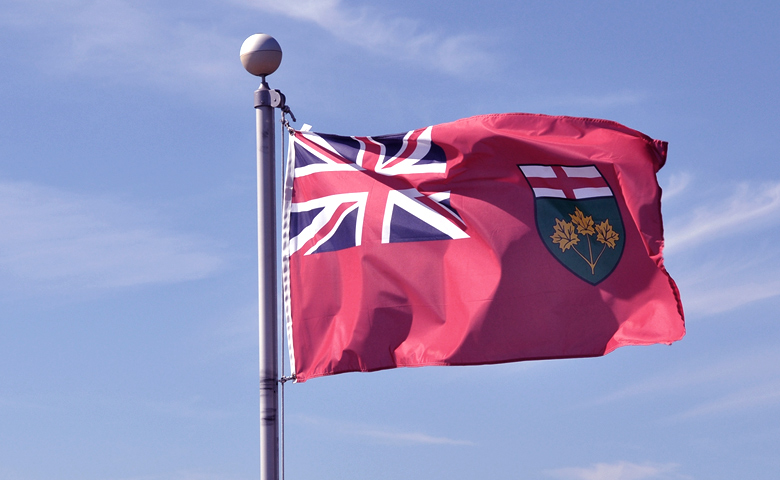Employment and the economy are still priorities in achieving a balanced budget in 2015
Federal budget March 21, 2013
Today, Canadian Finance Minister, the Honourable James M. Flaherty, presented his eighth budget, the second budget of the Conservative majority government. Although a budgetary deficit of $18.7 billion is anticipated for 2013-14, a surplus of $800 million is projected by fiscal 2015-16.
In this uncertain environment, the government’s focus is clear: jobs and the economy. Economic Action Plan 2013 builds on the foundation that was laid last year with measures to create jobs, promote growth and support longterm prosperity. Several measures, in particular, are intended to assist the struggling manufacturing sector.
From a tax perspective, previous budgets have adopted a number of rules to close tax loopholes and prevent certain business and individuals from avoiding taxes. This year’s budget is no different. A number of new measures have been introduced to close tax loopholes and combat international tax evasion and tax avoidance.
The government also announced its intention to consult on possible measures to eliminate the tax benefits that arise from taxing testamentary and certain other trusts at graduated rates. A consultation paper will be publicly released to provide stakeholders with an opportunity to comment on these possible measures.
Finally, previous budgets had noted the government’s interest in exploring the issue of whether new rules for the taxation of corporate groups—such as the introduction of a
formal system of loss transfers or consolidated reporting— could improve the functioning of the corporate tax system in Canada. Following extensive public consultations, the government has concluded that moving to a formal system of corporate group taxation is not a priority at this time.
The following is a summary of the tax measures that were addressed in this year’s budget. Please contact us for more information on any of these measures.
You could also like to read
Next article
Updated on January 24, 2024
Did you know that, under certain circumstances, you can claim a tax deduction for purchasing Canadian works of art?
Whether they are individuals in business, partnerships, corporations or trusts, taxpayers who acquire an eligible work of art can claim an annual capital cost allowance equal to 20% of the amount paid for federal purposes and 33 1/3% of the amount paid for Quebec purposes.
Eligible works of art
Eligible works of art are:
- Prints, etchings, drawings, paintings, sculptures and other similar works of art whose cost is not less than $200;
- Hand-woven tapestry or carpets, or handmade appliqués, whose cost is not less than $215 per square metre.
Conditions
- The work of art must have been created by an artist who was a Canadian citizen or permanent resident at the time it was created;
- The work of art must have been acquired from a person with whom the purchaser was dealing at arm’s length;
- The work of art must have been acquired solely for the purpose of generating business income, for example, to decorate the reception area, a conference room, hallway or a shareholder’s office, and be visible to the enterprise’s clients.
Note that taxpayers cannot bring the works of art to their personal residence, unless they have an office where they receive customers, which could be the case, for example, of self-employed individuals, such as consultants, accountants, lawyers, etc.
In the future, taxpayers who sell an eligible work of art that subsequently appreciates in value, must pay tax on the taxable capital gain and, as necessary, add the recapture of the capital cost allowance claimed over the years to the their business income.
As an individual who owns works of art, you are not eligible to claime a capital cost allowance. However, there may be tax implications when you sell such works of art. It is advisable to retain information on the purchase date and price.
Lastly, taxpayers also have the option to donate works of art to charitable organizations and obtain a charitable contribution credit.
Do not hesitate to contact us if you have any questions regarding the owning works of art as part your business activities, or for all other inquiries.
Our experts will be happy to provide you with sound advice regarding your tax situation. They can help you avoid costly mistakes and give you the benefit of their knowledge to optimize your business’s tax situation.
20 Jul 2012 | Written by :
Mr. Gareau is your expert in taxation for the Sherbrooke office. Contact him today!
See the profileNext article
Updated on February 23, 2024
Finding meaning in what we do is essential. Everyone needs to be recognized for their efforts. Does your company have a policy in this sense?
As the pool of competent resources grows smaller, effective and optimal human resource management has become a common goal.
Businesses have been dealing with this issue for many years. Managers need to invent a whole array of strategies to attract and retain the best human resources.
How can you, as an employer, make sure that your employees are motivated to work for your company and to give their best? There is one simple, easy-to-apply tactic that can optimize employee productivity: recognition.
Recognition, a powerful tool
If you recently conducted an organizational climate or satisfaction survey in your organization, the results may have shown that recognition is a strong motivator, perhaps even more so than salary.
Human resource specialists and experienced managers all agree that recognition is a very powerful management and mobilization tool.
How can employers use recognition efficiently and consistently so that employees feel involved, accountable, motivated and valued and actively contribute to the organization’s success?
What is recognition?
According to the Institut national de la santé publique du Québec, it is essential to maintain a balance between the efforts made by a worker and the recognition received. The greater the effort required, the greater the risk to physical and mental health if measures such as recognition are not taken.
Several aspects can be evaluated and recognized:
- daily efforts, regardless of results;
- achievement of specific goals;
- work methods and behaviour.
Recognition program: a few questions
Before an organization introduces a recognition program, it must consider three points. It needs to:
1. Define the initiative’s objectives
Does it want to recognize behaviour, competencies, effort or results?
2. Determine how employees will be recognized
Individually or as a group, with a monetary or a non-monetary reward?
3. Determine the type of recognition, based on the context
- Informal
If employees have done their work very well, if client meetings have gone well or if employees have done a very good job of representing the company at an event, management or supervisor recognition would be informal (pat on the back, word of thanks, forwarding of an acknowledgement email from a client. etc.),
- Formal
The employer sets up a structure – ideally with some employee participation – to recognize special employee work or initiatives. This could be done with a breakfast meeting, a “happy hour” event, the presentation of an award in an informal setting, provided it’s been organized by management. Such events provide an opportunity to recognize individuals or groups before their peers or even clients or business partners.
There are many small ways to recognize employees and promote their commitment, for example:
- Personalized thank you notes;
- Acknowledging significant life events (birth, marriage, etc.);
- Authorizing some time off after a particularly intense work period;
- Inviting employees for dinner;
- Forwarding praise about employees from clients or business partners.
To improve success
Once these methods have been clarified, it’s important that all managers be informed of the guidelines so that the various initiatives selected by managers are standardized and fair.
Additionally, recognition and reward programs implemented by employers should be consistent with employee wishes.
However, a number of prerequisites are key to ensuring that these initiatives actually achieve their intended objective. Here are a few that will bolster the effect:
- The recognition must be sincere. A stock greeting or thank you card, as nice as it may be, could have the opposite effect. The employee will feel that he or she is not even worth the effort of a few personal words of praise;
- Act immediately. Recognizing someone days (or weeks) after the fact has much less impact;
- Be positive and do it in person. Managers should talk to employees directly rather than sending an email.
Positive results
Recognition is a simple concept that is sometimes trivialized by senior management and some human resource specialists. Yet, it has a proven track record with employees. Additionally, it can easily be adopted by all managers in an organization.
It’s everyone’s responsibility to adopt simple but telling ways of showing recognition on a daily basis. The best way is to instil recognition practices in the corporate culture. With such an approach, managers will see higher staff retention levels and, perhaps even improved organizational competitiveness.
09 May 2012 | Written by :
Jean-François Boudreault is a RH expert at Raymond Chabot Grant Thornton.
See the profileNext article
Several mechanisms exist to reduce tax on capital gains. The capital dividend account (CDA) is particularly efficient. However, company shareholders do not seem to use it as much as they could. All it takes is sound planning.
The CDA is a mechanism provided under the Income Tax Act. It enables private companies (not public companies) to distribute tax-exempt amounts to shareholders. Though it is very efficient, use of the CDA must follow certain criteria.
The CDA in detail
The CDA is a type of account solely used for tax purposes. It is not a bank account and does not appear on the company balance sheet. This account contains a certain number of elements, including the following main ones:
• Excess of the non-taxable portion (50%) of capital gains over the non-deductible portion (50%) of the company’s capital losses;
• Dividend from other company CDAs;
• The proceeds from the company’s life insurance that exceeds the adjusted cost base (ACB).
Acting at the right time
The CDA is only useful if the company realizes gains, as shareholders may only receive payments when such is the case. If the company has losses, the amounts accumulated in the CDA will be reduced by the amount of these losses. This is why it is important to verify the CDA balance periodically because, from one year to the next, base on the company’s profitability, shareholders could withdraw tax-sheltered amounts.
The CDA and company life insurance
The CDA can also be used if the death benefit is paid to a company under a life insurance policy. In such cases, the amount payable to the CDA corresponds to the amount of the life insurance contract of which the company is a beneficiary that exceed the ACB. Significant amounts can therefore be tax-exempt through the use of this mechanism.
To take full advantage of this mechanism, appropriate planning is necessary, especially if share transfer is planned. Major amounts are at stake in such cases and the CDA can facilitate the transition between the seller and the buyer.
Lastly, it is important to fill out the required forms before proceeding with paying out the CDA dividends. Do not hesitate to call on our experts to determine the best strategies. They know the details of various programs well and can easily use them to your advantage.
30 Apr 2012 | Written by :
Mr. Vachon is a partner at RCGT. He is your expert in taxation for the Sainte-Marie office. Contact...
See the profile






